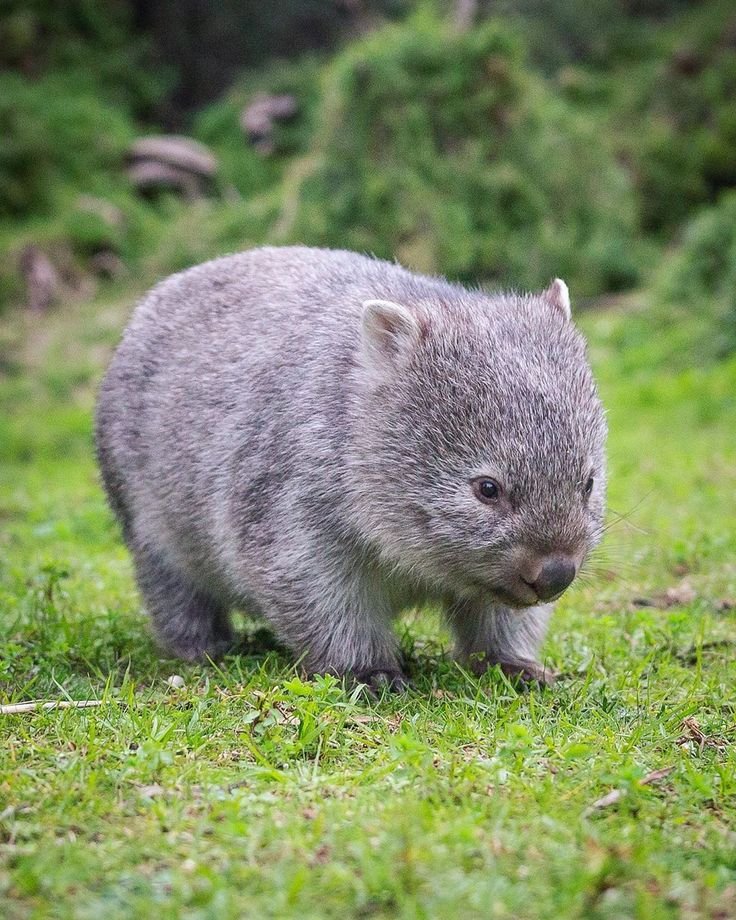
Wombats are truly fascinating. They’re not just adorable; they’re built for their environment in ways that are almost awe-inspiring. Their stout bodies and strong limbs make them excellent diggers, allowing them to create elaborate burrows where they can escape the heat and hide from dangers. So, how exactly do wombats navigate these challenges? Here’s a closer look at their survival strategies.
1. Adaptations to Extreme Temperatures
Wombats live in some incredibly hot and dry parts of Australia, where temperatures can soar during the day. You might be wondering how they cope with such heat. Well, they have a few tricks up their fur-covered sleeves!
First off, wombats are mostly nocturnal. They come out at night when it’s much cooler and safer from predators. This is a smart move—like choosing to go for a run early in the morning instead of in the blazing afternoon sun. By being active during the cooler times, they conserve energy and avoid overheating.
Additionally, wombats have thick fur that helps insulate them. It may sound odd, but this furry coat actually helps regulate their body temperature. When it gets really hot, they can dig deeper into their burrows, where it’s substantially cooler. So, instead of suffering in the sun, they become expert underground dwellers!
2. Building Efficient Burrows
Speaking of burrows, let’s dive into how these cozy underground homes play a crucial role in wombat survival. A wombat’s burrow can be quite extensive, stretching several meters long and often featuring multiple entrances. This is their safe haven, protecting them from both extreme weather and predators.
Burrows also keep wombats cool during hot days and warm during chilly nights. The soil acts as a natural insulator, maintaining a stable temperature. It’s like having a built-in air conditioner and heater! Plus, these burrows are damp, allowing wombats to access moisture in the ground, an essential resource in arid areas.
Here’s a fun fact: wombat feces are cube-shaped. This unique shape prevents their droppings from rolling away, marking their territory effectively at the entrances of their burrows. It’s a clever solution to communicate with fellow wombats while keeping their living spaces tidy!
3. Diet and Resourcefulness
Wombats are herbivores, primarily munching on grasses, roots, and shrubs. But let’s face it: finding food in harsh environments can be tough. So, how do they manage? Honestly, their diet is incredibly adaptable.
Wombats have strong teeth that grow continuously, allowing them to handle the tough, fibrous plants they often eat. Think of them as having built-in grinders! They can also go for longer periods without food and water compared to many other animals. This ability to endure food scarcity is crucial in the Australian bush, where resources can be sporadic.
When food becomes super scarce, wombats are not afraid to venture further from their burrows in search of new grazing areas. They have excellent memories and can navigate between food sources with ease, which helps them optimize their foraging efforts.
4. Handling Predators
Although wombats are pretty hefty, they still face threats from predators like foxes and wild dogs. So, how do they protect themselves? Wombats rely on their burrows, as previously mentioned. When they sense danger, they bolt back underground, where they’re safest.
But let’s not underestimate their tough exterior! Wombats have remarkably strong bodies, and when threatened, they can use their weight to their advantage. They may charge at potential threats with a surprising burst of speed, or they can simply hide away in their burrows until danger passes.
Their tough skin and powerful jaws also serve as a form of protection. If threatened, a wombat might bite, and trust me, their bite can be formidable! It’s like having a built-in defense system that says, “You’d better think twice before trying to mess with me!”
5. Conservation Efforts
Even though wombats are tough cookies, they still face challenges due to habitat loss and climate change. Many folks are working hard to ensure these unique animals continue to survive in their natural habitat.
Conservation efforts include protecting their habitats, reducing roadkill incidents, and managing invasive species that threaten their food sources. Organizations are also educating the public about the importance of wombats and their ecosystems. Awareness is key! The more we learn about wombats, the better equipped we are to help them thrive.
You might be wondering how you can help. Supporting local wildlife organizations, spreading the word about wombat conservation, or even visiting sanctuaries can make a difference. Every little bit helps!
6. The Role of Wombats in Their Ecosystem
Wombats aren’t just survivors; they play a crucial role in their environment too. Their burrowing behavior helps aerate the soil and provides habitats for other animals. It’s like they’re little ecosystem engineers!
As they dig, wombats move soil around and create spaces that other creatures can use, which supports biodiversity. Plus, their grazing habits can help control plant growth, keeping the vegetation in check and promoting a healthy balance in the ecosystem.
In a way, wombats are like unsung heroes of the Australian bush, keeping everything running smoothly, even from their cozy underground homes.
7. Conclusion: Celebrate the Wombat
Wombats are truly remarkable creatures, adapted to survive in some of the harshest environments on our planet. Through their incredible burrowing skills, dietary adaptability, and clever behavioral strategies, they show us the power of resilience. They remind us that even amid challenges, survival is possible with the right tools and a bit of ingenuity.
So next time you think about the wonders of the animal kingdom, give a little nod to the humble wombat. By understanding and protecting these amazing animals, we can ensure they continue to thrive in the wild. After all, their survival is a testament to the beauty and complexity of nature.

